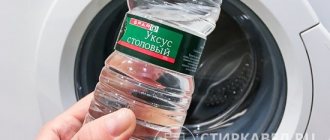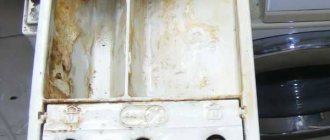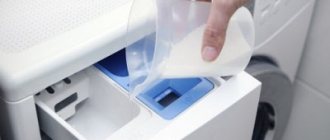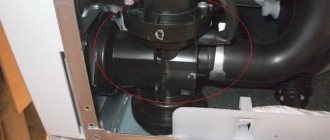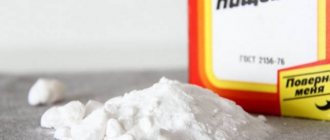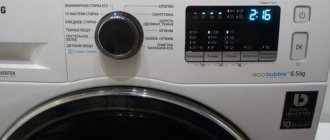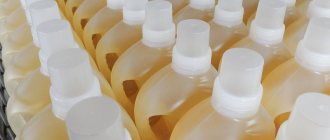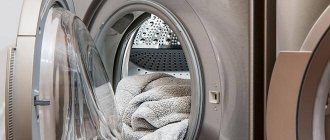Any household appliance requires careful care. Typically, the operating procedure is prescribed in the relevant instructions. This rule must be followed especially when operating a washing machine. The fact is that the machine operates using water, which has an adverse effect on its parts. In addition, during the washing process, the water paths can become clogged with various debris that gets from things loaded into the drum. Cleaning filters are provided to protect against clogging.
There are usually two of them installed on one Samsung washing machine: one at the inlet (fill filter), the other in the drainage system (drain). How to clean the filter in a Samsung washing machine will be discussed in this article.
Why do you need to clean your machine?
Various deposits accumulate on the parts of the washing machine over time. If they are not removed, the parts will fail, which can lead to damage to household appliances.
What to clean:
Sealing rubber. It is necessary to remove moisture from which mold and mildew develop. Otherwise, an unpleasant odor will appear, which can transfer to things.- The heating element must be descaled. If there is heavy deposit, the device will burn out and the water will not heat up.
- Powder tray. The container into which laundry detergent is poured becomes dirty. The tray may start to leak.
- Drain pump filter. Small things and dirt get into it, which affects the quality of water drainage.
- Inlet hose filter. It accumulates sand and rust, which are contained in the water.
The machine door and body may become coated with plaque. Which also leads to equipment damage and failure.
Regular cleaning will help prevent serious problems. It is recommended to clean every 2 months . When washing woolen items, it is recommended to increase the number of cleanings.
Frequency of prevention
Severely clogged drains lead to problems with the pump, so cleaning should not be delayed. It is optimal to clean this element every 3-4 months.
The fill filter does not require regular cleaning. It is carried out as the water supply to the washing machine deteriorates. If it begins to build up slowly, the mesh is cleaned.
Do you like your Samsung washing machine?
Not really
Cleaning the cabinet and door
Most often, the body of the washing machine can simply be wiped with a damp cloth without the use of cleaning agents. If the dirt is old, you will have to use the same liquid products that are used to remove plaque on the sink and bathtub. To do this, you need to apply them to the body, wipe with a sponge, and wipe with a clean rag.
The machine door is most often covered with limescale. It cannot be removed with water. Therefore, it is necessary to use products such as Clean Home, Sarma, etc. They must be used according to the instructions.
You can use available tools:
2 tbsp. l. Dilute soda in a small amount of water to make a paste;- add 1 tbsp. l. citric acid;
- apply the mixture to the glass;
- leave for 10-20 minutes;
- wash off with a damp cloth;
- wipe.
Buttons and other small parts on the case can be cleaned with the same mixture using an old toothbrush.
How to forcefully turn off a Samsung washing machine?
How to force stop a washing machine?
- Press the start/pause button or turn the knob to “stop”. ...
- After a few seconds (about 1 minute), the hatch will be unlocked.
- You will have a chance to add or put away laundry, remove non-washable items, and then press start again.
Interesting materials:
Which comb does not damage your hair? What is the difference between grammatical and spelling errors? What is the difference between eau de parfum and eau de toilette? What is the difference between a virus and a worm in terms of malware? What fish are good to catch in October? What is the largest bird of prey in the world? What is the largest passenger car in the world? What is the most expensive banknote in the world? What is the most expensive bottle of wine in the world? What's the hottest star in the world?
Cleaning the powder tray
Samsung washing machines, like many modern models, have a tray that has several compartments for chemicals. To pull it out, you need to press on the blue part and pull it towards you, applying a little force.
If the container is not very dirty, it is enough to rinse it with warm water , cleaning the powder with a toothbrush. Most often, plaque has to be removed using special or improvised means.
There are several cleaning methods:
- Lemon acid . 2-3 tbsp. l. dilute the powder in a small amount of water to obtain the consistency of sour cream. Rub the tray and leave for 15 minutes. Brush and rinse.
- Soda and vinegar . Pour baking soda into the tray and pour in a little vinegar. A chemical reaction will begin, after which you need to wait about 10 minutes and clean the container with a brush. Rinse with water.
- Use of chemicals . To clean the powder container, you can use any product that is used to remove scale and limescale. To achieve the goal, it is necessary to thoroughly treat the surface and leave for the time specified in the instructions for the cleaning product. You should not overexpose the chemicals so as not to damage the cuffs and other elements of the tray.
For severe stains, it is recommended to soak the container in a solution of soda, vinegar and hot water. To prepare, you need to take 1 liter of boiling water, 3 tbsp. l. soda and 2 tbsp. l. vinegar.
After the mixture sizzles, lower the tray into it and leave for 30-60 minutes. If necessary, the procedure can be repeated.
In extreme cases, the container is filled with vinegar essence . It is important to prevent liquid from getting on the seals.
Step by Step Actions
The procedure for cleaning the catch filter in a washing machine is simple and does not require great skills or special tools.
Tools and equipment
You need to prepare in advance and have simple equipment and tools on hand:
- A flat-head screwdriver (minus), a rounded cutlery knife, or a coin.
- Pliers or pliers.
- A low but wide reservoir for draining water.
- A rag.
- Flashlight.
On forums, some users share videos of their experience using a regular plastic garbage bag instead of a container, draining so that not a single drop remains on the floor.
Preparing for cleaning
In order to clean the filter assembly, you will need to perform some preparatory work common to all washing machines:
- turn off the water to the machine;
- disconnect the device from the power supply;
- using a screwdriver or other device, carefully pry and open the cover of the hatch in which the debris catcher is installed;
- Using the handle on the lid, turn it 45-60o counterclockwise and drain the remaining water in the system.
After this, you can completely unscrew and remove the debris catcher from the snail niche.
Troubleshooting Possible Problems
Often at this stage it becomes difficult to unscrew the drain filter. The causes of the problem may be:
- Irregularity of preventive cleaning of the unit.
- Scale formation on threads.
- Blocking of the catcher by foreign objects.
In these cases, there are simple methods that can help solve the stuck filter problem:
- tilt the washer slightly away from you and tap the filter cover with a gloved hand;
- try using pliers or pliers to unscrew the part.
To avoid breaking the plastic handle on the lid, clamp it with pliers and turn it carefully, without excessive force.
If you still cannot unlock the filter or it unscrews but cannot be removed from the niche, then there is another, more complicated method - dismantling the drain pump.
If there is no relevant experience, then the work of removing the snail with the pump should be entrusted to a specialist.
Process
The step-by-step cleaning procedure looks like this:
- Remove all foreign objects and deposits from the filter niche and wipe it clean.
- Use a flashlight to make sure the snail is completely cleaned.
- Use a rag, toothbrush or sponge to remove heavy dirt and scale from the filter itself.
- Wash the part well under running hot water.
- Put the filter in place.
To make it easier to remove mold or scale, you can use citric acid or soda dissolved in equal parts of water.
Example on a Samsung Diamond washing machine
More specific instructions for cleaning the drain filter can be seen using the example of a Samsung Diamond washing machine. The devices may have an emergency drain.
If you are forced to stop washing due to problems with water drainage, you must:
- Lift and open the cover of the hatch behind which the filter is located.
- Remove from hook and pull out drain tube.
- Remove the plug from the hose.
- Drain the water.
- Place the plug and secure the drainage tube in place.
For preventive cleaning of the Diamond washing machine filter, before removing it, the remaining water in the drain system is also pre-drained according to the emergency drain scheme given above.
The further procedure and sequence of actions for servicing the garbage trap are the same as for most automatic washing machines.
Cleaning the filter
Filters also require periodic cleaning:
Zalivny
Over time, the inlet hose filter becomes clogged with impurities contained in the water. If it is heavily soiled, the machine stops washing and displays an error indicating that it is impossible to draw water. The filter must be cleaned once every 5-6 months.
To do this you need:
Shut off the water supply to the washing machine.- Turn the machine around, allowing access to the rear.
- Find the hose at the top of the housing and unscrew the nut that holds it. This can be done with a suitable size wrench or pliers.
- Inside the hole is the filter itself in the form of a small mesh.
- Carefully remove it and rinse under running water, brushing with a toothbrush.
- Place the filter in its original place.
- Screw on the hose.
- Open the water supply.
After this, the machine can be returned to its original position, at the same time wiping the back panel with a damp cloth. If the filter is very dirty, it can be immersed in a container with vinegar for 15-20 minutes. Then rinse with clean water.
The filter may be damaged when dismantling. Therefore, the work must be carried out carefully. Otherwise it will need to be replaced.
Slivnogo
The drain pump often becomes clogged with small parts and debris . If you start it, the machine will display an error indicating that the water cannot drain. In this case, the washing process may stop at the transition to rinsing stage.
To get things out of the drum, you will have to use the emergency drain. Therefore, you need to monitor the condition of the pump and clean it regularly - at least once every 3 months.
To do this you need:
Open the door behind which the filter is located. The hatch is usually located in the lower front part of the housing.- Lay a towel on the floor and place a small container into which the water will be drained (for example, a baking tray or shallow bowl that will hold about 500 ml of water).
- Unscrew the filter cap and pull it out, draining the remaining water.
- Remove accumulated debris from the open hole. This could be wool, hair, small details from clothing decor, etc.
- Wipe the hole, tighten the lid and hatch.
If there are lime deposits on the cover or inside where the pump is located, they must be removed. This can be done with cleaning products or a solution of soda and vinegar.
If the machine stops during the washing process and refuses to drain the water, you will have to use the emergency drain mode, after which you can clean the pump.
In modern Samsung models, there is a drain hose next to the filter cover. It is through this that the drainage will take place. In this case, you need to stock up on several containers, since there can be quite a lot of water.
Draining process:
- remove the emergency hose by carefully pulling it towards you;
- remove the plug - it may be difficult to come out, it is recommended to remove it with a rocking motion;
- lower the hose into a basin or other container;
- wait until the water comes out completely;
- unscrew the filter cover;
- clean it.
Older models do not have a drain hose. Water drains through the filter cover. In this situation, it is recommended to place a thick cloth under the hatch and open the filter cover slightly. Periodically changing the fabric or squeezing it out, drain all the water.
Placement of the drain pump
In washing household appliances, drain pumps and garbage traps are structurally located in the lower part.
In Samsung models with horizontal loading, these parts are located on the front wall, at the bottom right, under the rectangular hatch cover. In most earlier machines - under a removable plastic false panel .
In less rated washing machines from this manufacturer with top loading - under the panel at the bottom or on one of the sides of the device. But at present there are almost no vertical devices from Samsung on the Russian market.
Removing scale from heating elements
To remove scale from heating elements, you need to use inorganic or organic acids. Citric acid and vinegar, which are found in every home, have proven themselves to be the best.
Soda and vinegar
To get rid of small deposits, you can use the means at hand:
- Pour half a glass of soda into the tray used for the powder.
- Pour 1 liter of vinegar into the empty drum of the machine.
- Run the wash cycle on the longest cycle at maximum temperature.
- Wait until the cycle ends.
Experts advise pausing the machine when the water heats up. This will allow the solution to have a longer effect on the plaque.
Citric acid
Citric acid can be used to clean heating elements regularly. To do this you need:
- pour acid into the powder compartment - the amount depends on the volume of the washing machine, for a 5 kg load it will take 3-4 packs;
- run the wash at maximum temperature.
You can clean it every 2 weeks. Read about how to descale your washing machine with citric acid here.
By industrial means
Industrial descalers should be used regularly. They all contain alkalis. Therefore, the choice of product depends on financial capabilities and personal preferences.
Among the most popular are:
- Magic Power – pour 250 to 500 ml of product into the powder container. Start washing at 60 degrees. The price of the product is from 140 rubles.
- Antiscale – pour the powder into the tray. Start the mode at maximum temperature. Price - 100 rub.
- Topper - must be poured into the drum for further dry washing at maximum temperature. Price - from 300 rub.
If necessary, cleaning can be done weekly.
Mechanically
To clean the heating element and assess the degree of contamination, you need to remove the heating element. If you have no experience in disassembling washing machines or the equipment is under warranty, then it is better to entrust the work to a specialist.
When deciding to remove the heating element yourself, you must strictly follow the instructions:
remove the back wall of the case - to do this you need to unscrew several screws and unclip the panel locks;- disconnect the “chips” of the heating element and remove it;
- soak the heating element in a solution of vinegar or citric acid; you can treat it with special descaling agents;
- dry the heating element;
- Reassemble the machine in reverse order.
Cleaning with abrasive substances or scraping the heating element is prohibited. If the scale does not come off after a single treatment, it is worth repeating the cleaning procedure.
Main filter element
The main task of the filter element is to trap debris and foreign objects, preventing them from entering the pump.
Most of the animal hairs entering the machine settle in the drain filter. The node is located at the front, in the lower right corner of the unit. It is hidden behind a small hatch or decorative panel. To clean the filter from pet hair, you need to:
- de-energize the equipment, close the shut-off valve;
- tilt the body of the machine back, place a shallow basin under the washing machine. It will be needed to collect water that flows from the system while performing work;
- open the hatch or remove the false panel covering the filter;
- find the emergency drain hose, it is located here. You need to pull out the tube, remove the plug from it and drain the dirty water into a container placed under the machine;
- if there is no hose, start unscrewing the filter element from right to left. First, the plug is removed a quarter of the way, the water is drained, then the whole filter is removed;
- rinse the filter under running warm water;
- inspect the hole formed after removing the plug, clean dirt from the walls. Shine a flashlight into it - this way you can assess the degree of contamination of the pump impeller. If there are animal hairs wrapped around the blades, you need to remove them;
- place the filter element back into the “socket”, tighten it until it stops, rotating the plug from left to right.
All you have to do is close the hatch or install the panel, carefully pull the basin out from under the machine and move the washing machine into place. To check whether the filter is screwed in correctly, start the “Rinse” mode. If a puddle begins to form under the machine, you will have to pull out the “trash can” again and screw it evenly into the niche.
Preventing blockages
The washing machine needs regular maintenance. To prevent dirt from accumulating in it and limescale deposits, you need to follow some rules:
- Use detergent or detergent in the quantity required. In order not to make a mistake with the dosage, you must carefully study the instructions on the package. Excess powder will not improve the result, but will settle on the walls of the machine or in the detergent tray.
- Check pockets and small parts on clothing. Some decorative elements should be removed from items before washing so that they do not clog the drain filter.
- Do not leave laundry in the drum before or after washing.
- Ventilate the machine regularly.
- Use a powder that softens the water.
You will find a lot of useful and important information on how to properly use Samsung washing machines in this section.
How to check if the equipment is working after the procedure?
If the reinstallation of the debris catcher is done carefully, and the part fits tightly and evenly, then no problems should arise during operation of the device. But you should still check the drain system for leaks.
Important! The washing machine is plugged in and checked for leaks. To do this, turn it on in rinsing mode (without laundry).
Have you already cleaned your washing machine filters?
Not really
What to wash with?
The modern market is filled with special cleaning products for washing machines. There are even some that prevent pollution. But this is expensive and not always effective.
Most likely, you have in your kitchen components of folk recipes that will help you get rid of the garbage that has filled your appliances:
- Thanks to baking soda, you can get rid of and prevent the appearance of mold on machine parts. The best option is to clean it once a week. This must be done regularly.
- The vinegar essence, thanks to which delicious dishes are prepared, can also serve as a good cleanser. It is capable of cleaning all hidden components of the automatic machine from contamination. To do this, you need to pour vinegar essence into the inside of the drum. Under no circumstances should you wash clothes or use other types of detergents (an unpleasant reaction may occur). With this type of cleaning, acetic acid will do everything for you; you just need to turn on a long wash at maximum temperature. The higher the degrees, the more effective the cleaning. Don’t worry, the acid will not harm the internal parts of the machine.
- Lemon has the power to eliminate mold, unpleasant odors, dirt residues, and light plaque. You need to pour this product into a tray and select a long wash with a temperature of at least 60 degrees. You will need at least 200 grams of citric acid. As a result, the limestone will disintegrate and also peel off. There is no need to wash things during the procedure. They will serve as an obstacle to the action of acid. After the procedure, do not forget to include an intensive rinse - this will wash away the remaining lemon juice. It is worth noting that citric acid corrodes rubber parts of equipment, so it is not recommended to resort to this cleaning method more often than once every 3 months.
- Bleach can also help remove limescale. You only need a glass of white. After washing in a mode identical to the one described above, you should open all the windows in your house to allow fresh air to enter, since the resulting vapors will have a negative effect on the body. However, this is the only negative impact of this method.
Industrial products, such as Calgon, will also help you with cleaning. A lot of people use it. There are other products available in household chemical stores. For example, “Antinscale”, but when using it you need to wash it without clothes.
Cleaning the pressure switch tube
Small hairs can even get into the tube of the level sensor, which is why it begins to work incorrectly. You can check how the device performs its functions by observing the flow of water into the tank. Perhaps there is too much liquid, or, on the contrary, not enough. If the washer displays an error code indicating a malfunction of the pressure switch, you need to check and clean its tube.
The algorithm of actions will be as follows:
- unplug the machine from the network;
- remove the top cover of the case by unscrewing the two bolts securing it;
- find the level sensor - it is usually attached near the right wall;
- find the rubber tube connecting the tank and the pressure switch;
- unhook the hose from the sensor and blow out its cavity;
- reconnect the tube.
Then you need to replace the “top” of the machine body and run a test washing program, for example, “Rinse”. If the pressure switch works properly, the reason was indeed the blockage that had formed.


